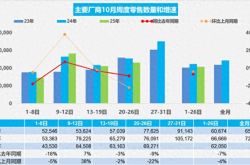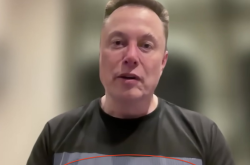ChatGPT-5 Arrives: From Fanatical Praise to Rational Skepticism
![]() 08/11 2025
08/11 2025
![]() 417
417
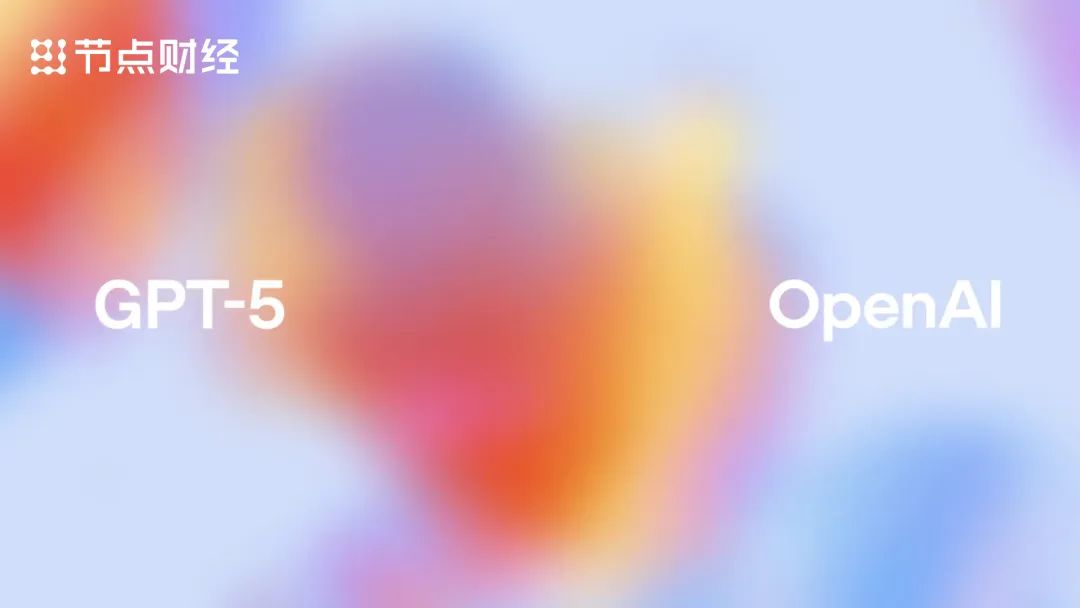
Text by Erfeng
Source: Jiedian Finance
On the morning of August 8, Beijing time, OpenAI officially released its latest flagship model, GPT-5, to the world. This highly anticipated AI system finally made its debut after two delays.
Sam Altman, CEO of OpenAI, described communicating with GPT-5 as if one were conversing with a doctoral-level expert ready to serve in any field. It can not only chat but also help you achieve any goal.
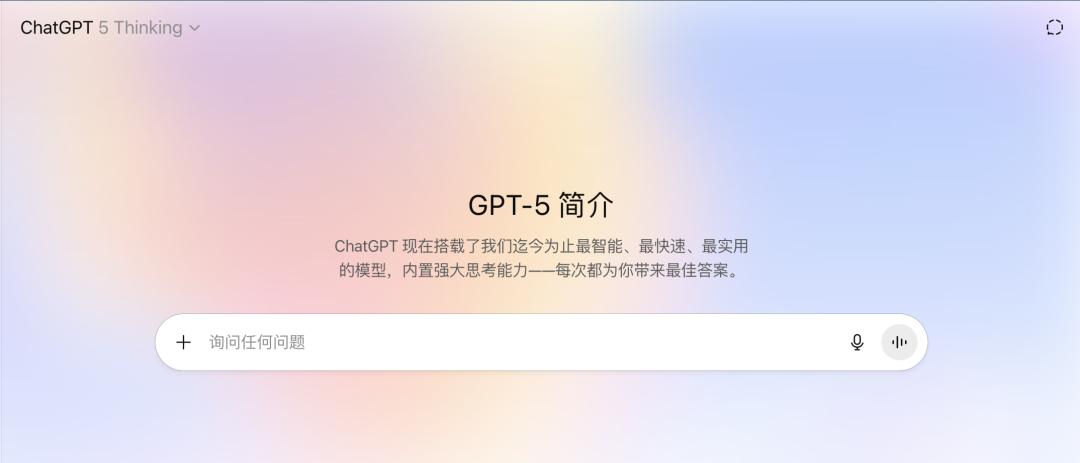
Regarding previous models, he also made similar comparisons. For example, communicating with GPT-3 is more like talking to a high school student, with occasional flashes of inspiration but also many annoying aspects. GPT-4o, on the other hand, is more like a college student, combining intelligence and practicality.
Jiedian Finance believes that as OpenAI's "smartest" model to date, the release of GPT-5 marks an important step for the company in the technology competition, and it also indicates that the entire AI industry is shifting from pursuing breakthrough innovations to a new stage of product refinement and commercialization.
According to official OpenAI data, GPT-5 has been opened for use by over 700 million active users globally. However, unlike the "disruptive revolution" expected by the market, GPT-5 is more like a carefully polished product upgrade, reflecting that the AI industry is entering a more pragmatic development stage.
01 What's New in GPT-5?
GPT-5's most eye-catching technological innovation lies in its "unified routing system" architecture.
In simple terms, compared to previous generations where users needed to manually select from 5-6 models based on their needs, GPT-5 can automatically switch between fast response mode and deep reasoning mode, without requiring manual selection by users. According to OpenAI, this architectural design allows GPT-5 to "think like an expert and communicate like a friend."
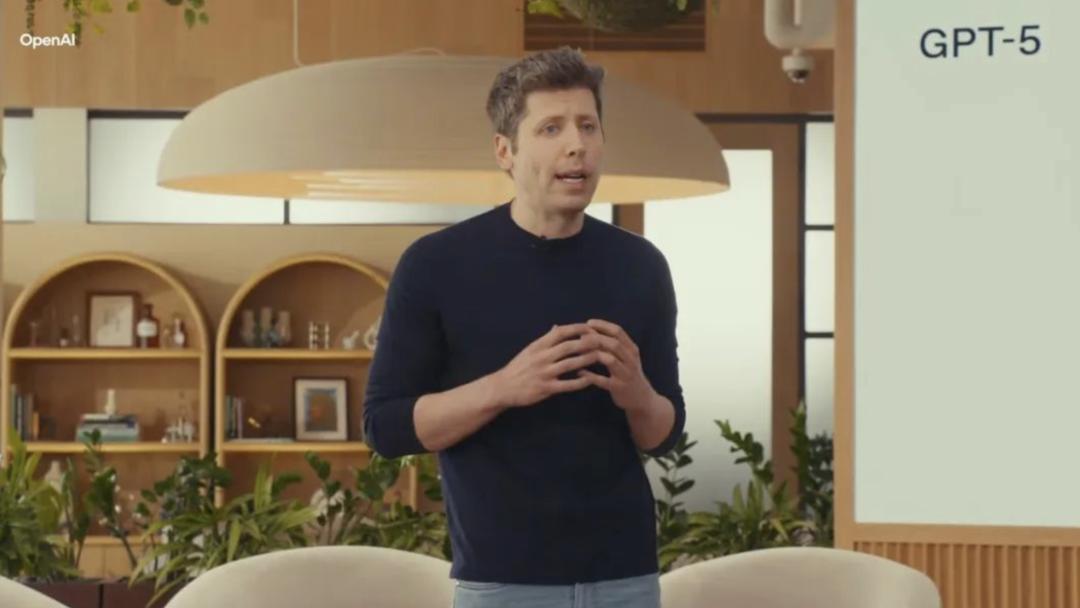
Sam Altman, CEO of OpenAI
In terms of technical indicators, GPT-5 demonstrates significant performance improvements. According to the system card released by OpenAI, the model scored 74.9% on the SWE-bench programming benchmark test, slightly surpassing the 74.5% score of Claude Opus 4.1, recently released by Anthropic. In terms of accuracy, GPT-5's hallucination rate is 45% lower than that of its predecessor, GPT-4o, especially in health and medical queries, where the error rate dropped significantly from 12.9% for GPT-4o to 1.6%. This improvement is of great significance for medical AI applications.
A research report from SOOCHOW Securities estimates that GPT-5 may have up to 18 trillion parameters, a training cycle of approximately 203-225 days, and a training cost exceeding $500 million.
Jiedian Finance analyzes that the huge investment reflects the capital-intensive nature of current AI large model development and also predicts that a new wave of AI infrastructure investment will come in the future.
OpenAI has also designed a quite sophisticated differentiated service system for GPT-5, providing different levels of access and functionality for different users.

For free users, a basic quota of 10 messages every 5 hours is provided, with the ability to use GPT-5's deep reasoning mode once daily. Plus subscribers (monthly fee of $20) receive 80 message credits every 3 hours and can use the deep reasoning mode 200 times per week. Pro professional users (monthly fee of $200) enjoy nearly unlimited access, with this high-end pricing targeting professionals and creators who deeply rely on AI tools. According to CNBC, OpenAI expects Pro users to come mainly from fields such as software development, data analysis, and content creation.
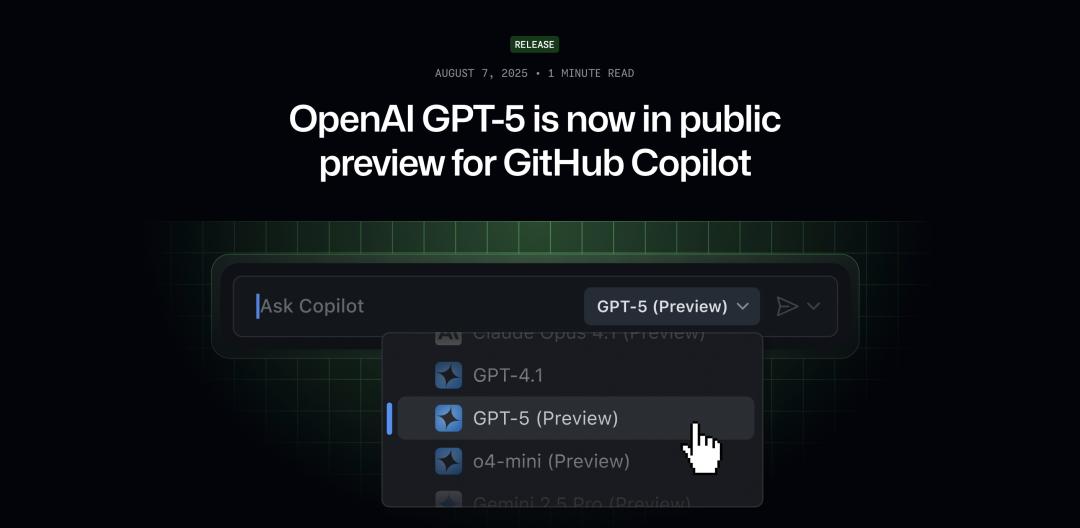
GPT-5 on GitHub Copilot
In terms of API pricing, GPT-5 has chosen a highly cost-effective competitive strategy, with a price of $1.25 per million input tokens and $10 per output token. This price has a significant advantage over Claude 3.5 Sonnet's $3 input/$15 output pricing. This aggressive pricing strategy also reflects OpenAI's attempt to regain market share in the enterprise market through price advantages.
02 Personalized Upgrade, Can AI Really Understand You Better?
Notably, GPT-5 has taken a big step forward in personalizing the user experience.
For example, if a user emphasizes the desire for concise and to-the-point answers without unnecessary words, GPT-5 can maintain a succinct and straightforward style throughout the conversation, without requiring the user to repeat their request each time.
To this end, GPT-5 also introduced the preset personality role feature for the first time, providing all users with four preset AI assistants named "Cynic," "Robot," "Listener," and "Nerd."
Each personality mode has a different communication style. For instance, in "Listener" mode, ChatGPT's responses will be more patient, considerate, and empathetic. When switched to "Cynic" mode, the replies may contain a touch of sarcasm and humor. This design concept, as Altman put it, aims to "allow everyone to have their own expert AI assistant," enhancing the affinity and personalization of human-computer interaction.

A senior user who frequently uses ChatGPT for writing told Jiedian Finance that he can clearly feel the change in the tone of GPT-5's responses, "It's more like a real person, but compared to the concise and logical responses under the previous in-depth research mode, the current responses are more oily."
Jiedian Finance believes that, on the one hand, the personalized upgrade has evolved ChatGPT from a stereotypical answering machine into a more charismatic "digital assistant." This is expected to increase user stickiness – ordinary users or corporate employees may be more willing to use an AI partner that fits their style and understands their needs for a long time.
On the other hand, personalization also means that the model will make certain adjustments based on user preferences, which has sparked discussions about "confirmation bias." When AI caters to users' viewpoints, it may also deepen the information cocoon. It is actually necessary to maintain diversity and moderate neutrality in preset personalities and guide users to switch between different perspectives, thereby avoiding the narrow-mindedness caused by AI blindly catering to users.
Besides the personality system, personalization is also reflected in deep integration with users' daily workflows. By connecting with tools such as Gmail and Google Calendar, GPT-5 can access users' email history and schedule to provide highly personalized responses and suggestions.
According to The Washington Post, a beta tester shared his experience: "GPT-5 can remember the project details I mentioned in previous emails and automatically quote relevant information when replying to new emails. This coherence makes me feel like I'm communicating with an assistant who truly understands my work."
03 Evaluations Tend to Polarize, from Fanatical Praise to Rational Skepticism
Sam Altman compared the improved experience of GPT-5 to "the moment when the iPhone upgraded from a rough pixel screen to a Retina display" during the launch event and admitted, "When I try to go back to GPT-4, it's quite painful."
He also emphasized GPT-5's breakthrough in "on-demand software" creation. In short, users can instantly generate customized software applications through simple natural language descriptions. He predicted, "On-demand software will be a defining feature of the GPT-5 era."
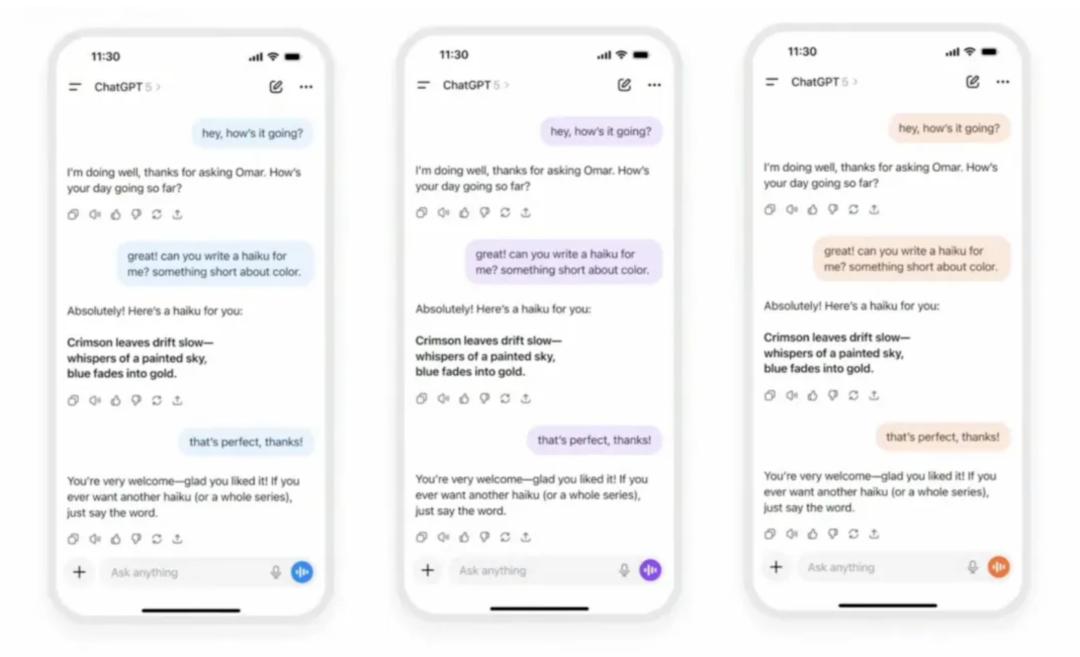
However, the evaluations of GPT-5 by academia and technology experts are markedly divided. MIT Technology Review commented, "GPT-5 is a well-polished product, not a technological breakthrough." The review pointed out that although GPT-5 has improved in some metrics, it is "far from the transformative AI future that Altman has promoted over the past year."
Feedback from the developer community is more complex. The code editor Cursor team called GPT-5 "the smartest model we've ever used," especially in understanding complex codebases and generating high-quality code. However, the test results from content creation platforms were not as satisfying, as they found GPT-5 to be "consistently failing" on some writing quality assessment tasks and even performing worse than GPT-4o.
The aforementioned senior user told Jiedian Finance, "I waited until 4:30 am to use the update, only to find that the system network was directly down, and none of the online tasks could be completed. The old model was nowhere to be found, and the generated content was far from that of GPT-4.5."
While GPT-5 reflects the current cutting-edge level of AI technology to a certain extent, people from all walks of life are also soberly aware of its flaws and limitations.
First, the issue of "hallucinations" still exists. OpenAI's internal assessment shows that by optimizing training and human feedback, GPT-5's tendency to make up false information has been reduced by about 60% compared to the previous generation. However, in an open real-world environment, the model will inevitably encounter new problems not covered by the training data, at which point it may give incorrect or even absurd answers. This prompts users to retain the habit of verification and judgment when relying on GPT-5 and not to treat AI-generated content as absolutely authoritative.

Jiedian Finance found that under the information prompt bar, GPT-5 also specifically added a small line of text stating, "ChatGPT may also make mistakes. Please verify important information."
Secondly, reasoning transparency remains a black box. The specific basis for GPT-5's judgment is often difficult to explain clearly to users. This is especially evident in scenarios where tracing the source of information is required. This reflects the inherent lack of explainability in current large models, which is also a recognized challenge in the industry.
An industry analyst told Jiedian Finance that making AI "explainable and traceable" will be an important research direction in the next stage, but this problem has not yet been solved in GPT-5.
Furthermore, concerns about model bias and security issues persist. Although OpenAI has introduced stricter security measures in GPT-5, including content filtering and setting special modes for sensitive areas, no preventive measures can be foolproof.
The analyst told Jiedian Finance, "GPT-5's training data comes from the internet, inevitably carrying traces of various biases and harmful information." For example, when trying to guide GPT-5 to discuss political or socially controversial topics, the model sometimes gives vague responses, clearly holding back under security rules. However, in other scenarios, GPT-5 may still output inappropriate content or biased views. If these outputs are adopted and disseminated without scrutiny, they may have negative impacts.
04 A New Landscape in the AI Industry?
The release of GPT-5 is not only a significant milestone for OpenAI but also has a broad impact on the entire AI industry.
First, its advancement in commercial applications is evident. OpenAI officially disclosed that currently, more than 5 million enterprise users, including Morgan Stanley, BBVA, Lowe's, SoftBank, and T-Mobile, have used its ChatGPT series of commercial products. These leading enterprises spanning finance, retail, communications, pharmaceuticals, and other industries are integrating GPT models into key workflows such as R&D, customer service, and decision support.
With the arrival of GPT-5, early adopters in various industries are expected to further expand their leading edges. They can leverage GPT-5's more accurate analysis, stronger creative generation, and longer context understanding to reshape business models. For example, investment banks can use GPT-5 to quickly analyze massive financial reports and generate insights, e-commerce customer service can provide real-time solutions to complex customer problems through GPT-5, and pharmaceutical companies can utilize GPT-5 to design and interpret experimental reports.
Meanwhile, the release of GPT-5 also has a chain reaction on the industrial competition landscape.
On the one hand, it consolidates the leading position of OpenAI-Microsoft in the "cognitive AI as a service" market; on the other hand, it also incentivizes competitors to accelerate their pace of catching up. According to reports, Google is preparing to launch a new generation of large models, Gemini, to compete head-on with GPT-5. Meta continues to open-source larger language models, hoping to achieve technological breakthroughs through community efforts. Chinese companies such as iFLYTEK, Baidu, and Alibaba have also announced plans to upgrade their large models, striving to compete with GPT-5 in the local market.
Jiedian Finance analyzes that while GPT-5 becomes a new industry benchmark, it also forces all players to re-examine their AI strategic layouts. This "arms race" certainly drives rapid technological progress but also attracts the attention of regulatory authorities.
Regulatory agencies in Europe and the United States have clearly stated that they will closely monitor disruptive AI products like GPT-5 to ensure their development "does not deviate from the path of safety and ethics." The AI Act being developed by the European Union requires that high-risk AI systems improve transparency and pass compliance assessments. It is foreseeable that the governance framework surrounding powerful AI will become more complete in the future, promoting the healthy development of technology within regulations.
Written at the end
The advent of GPT-5 may mark a new stage for generative AI.
From a technical perspective, it brings machines one step closer to 'understanding humans'; from an application perspective, it is profoundly impacting the efficiency and models of various industries. Of course, we must also face up to the shortcomings and risks that GPT-5 still poses, and while marveling at the advancements of AI, we must continue to maintain rationality and prudence.
This may well be the original intention that AI leaders such as Sam Altman have repeatedly emphasized: to make AI a tool that enhances human capabilities, rather than a source of uncontrollable risk.
In the new era of AI, where opportunities and challenges coexist, GPT-5 has unfolded an imaginative picture for us. The real test lies in how we can harness this 'intelligent steed' and steer it in the right direction. I believe that with the joint efforts of academia, industry, and research worldwide, the future of artificial intelligence will develop in the direction we desire, and GPT-5 is just the beginning.



